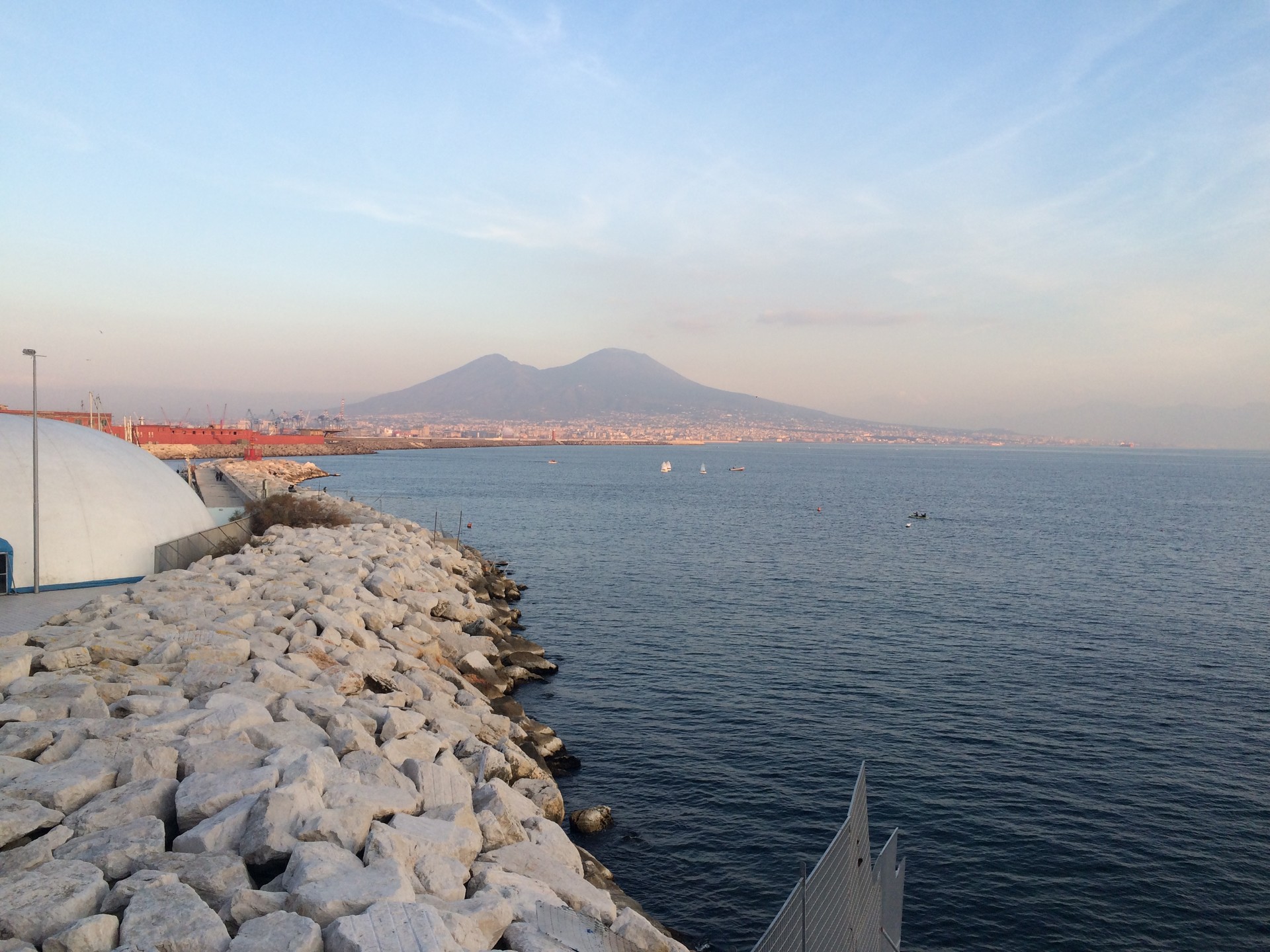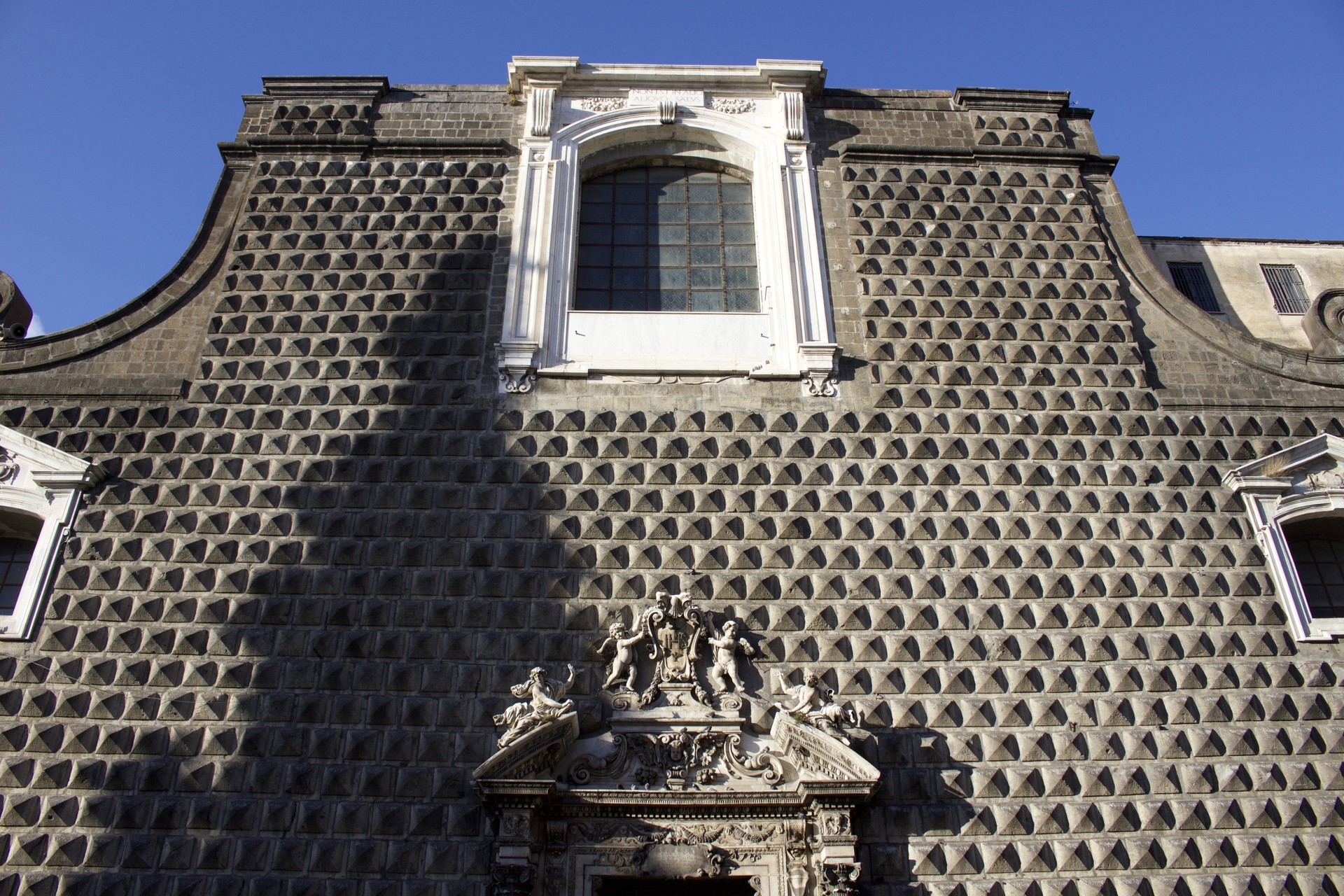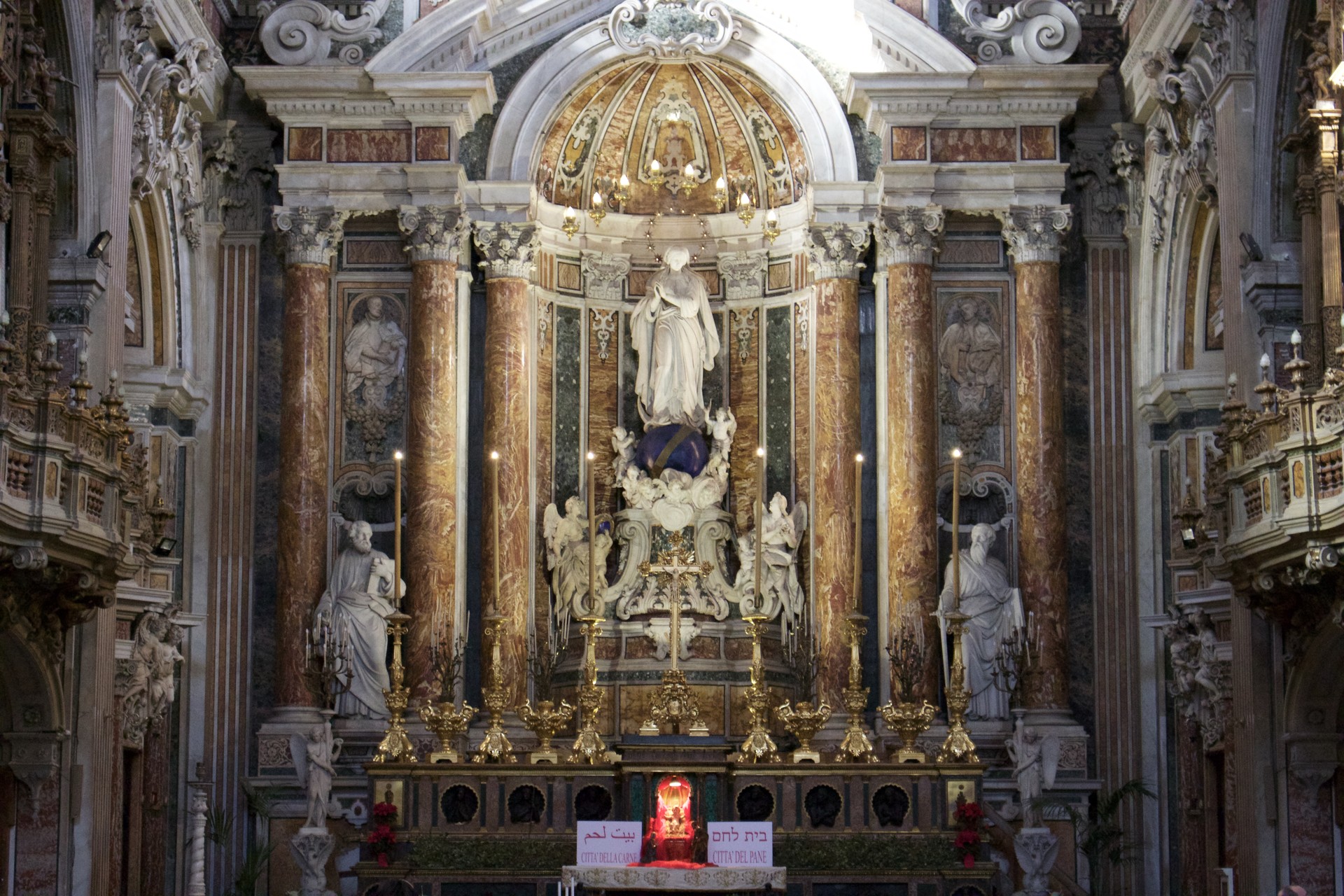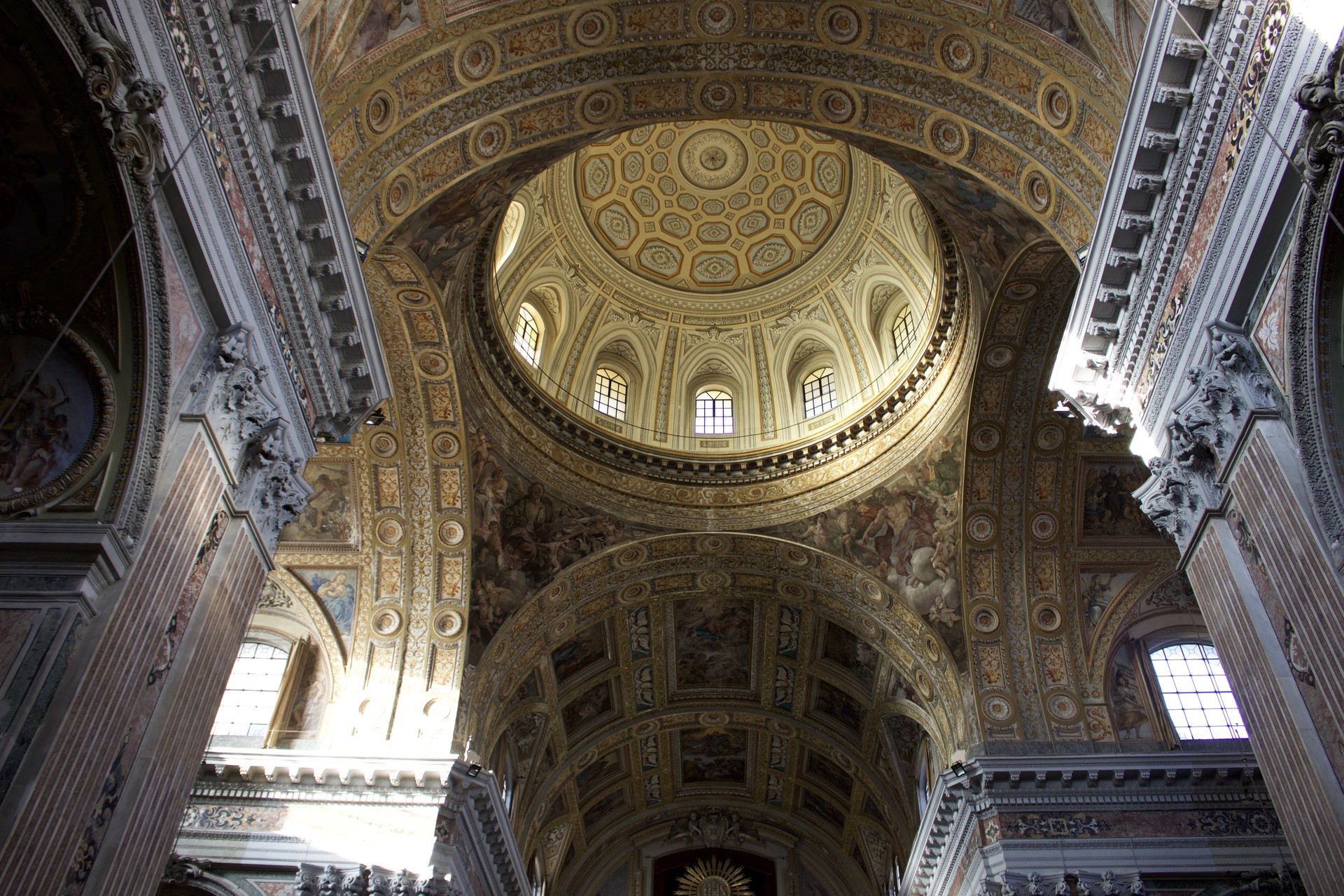What to see in Naples
I am sure most of you are aware of the common stereotypes Naples holds. However the first time I set foot in Naples completely changed my perspective on these stereotypes. Mostly because nowadays the city has changed; it is cleaner and safer and above all you come to appreciate the history behind this beautiful city. Naples was initially founded in the eighth century B. C, and lived through many diverse rulers such as the Greeks, the Roman Empires, the Napoleon Parthenopean Republic and ultimately served as the capital of The Kingdom two Sicilies.
It is because of this varied and tumultuous past that Naples has become a very city in terms of its rich historical, cultural and religious heritage.
There are many sites and monuments in Naples that narrate the cities past and these are essential to see when in the city.

Complex of Santa Chiara:
The Complex of Santa Chiara is considered to be one of the largest and most important religious complexes of the city. It is composed of a basilica, a monastery, a bell tower and four beautiful cloisters.
Built in the fourteenth century, the basilica of Santa Chiara is a prime example of Gothic architecture. This basilica was requested by the King of Naples Roberto d’Angiò, who reigned between 1309-1343. Located on Via Benedetto Croce, this church is seen as one of the most important sites of the city. The façade holds a fascinating portal of typical fourteenth century gothic style. It is a very simple structure again typical of the gothic era. The interior is composed of a single rectangular nave with ten side chapels. It holds very important works of art from two famous Italian artists: Tino di Camaino and Giotto.
The Bell tower is a thirteenth century monument that fell during the earthquake in 1456 and was subsequently rebuilt in baroque style only o be completed in the beginning of the seventeenth century.
The Monastery played an important role in its history. The King and his wife Sancia of Majorca were devoted to St. Francis of Assisi and St. Chiara, and therefore decided to build a double monastery to house both the Clarisses in the convent and the Friars in the monastery. Today however this monastery houses the Museo dell’Opera, an archaeological museum that contains numerous essential items that relate to Napoli’s heritage including those destroyed by world war II bombings.
Location: Via Napoli 49
Tickets:
- Adults: 6 Euros
- Students: 4. 50 Euros
Opening Hours: 7. 30-13. 00 & 16. 30-20. 00
Castel Nuovo
This is probably one of the most beautiful castles in Italy. It is a large, medieval castle situated in the doors of the city centre and it is considered to be one of the landmarks of Naples. Its precise location is in Piazza Municipio, near the Royal Palace gardens and close to the port. This was a strategic location chosen by King Carlo I d’Angiò who used it as a second base from the Castel Capuano.
It was built in the thirteenth century, concretely between 1279-1282 by French architects. The castle was initially built in the classic gothic style with four large defence towers, however in the fifteenth century, Naples was in power of the Aragons. They added some modifications to the castle creating a more solid looking castle with one extra defence tower. They also added an incredibly detailed entry to the castle with an intricately adorned marble arch, considered to be one of the best works of the Italian renaissance. Today the Castle is home to the city council and to a museum, opened in 1990 and stores some of the most beautiful works of art.

Castel dell’Ovo
Castel dell’Ovo is the oldest castle in the city of Naples and one of the most historically interesting buildings. The name derives from an old legend in which Virgil, the Latin poet, hid inside the building an egg that supposedly held up the whole fortress. In the eventual case that the egg should break, not only the entire fortress would collapse but also it would provoke large damage to the city of Naples. The castle plays an important role in Naples due to its numerous uses such as a prison in which the Emperor Romulus Augustus was imprisoned during the Roman Empire, a monastery in the 5thcentury and a Palace under the Norman occupation of Naples. Following the Aragonese and the French, the Spanish finally reconstructed the castle into the structure it has today. Each period of its occupation shows its marks on the castle.
The castle is open to visits. The opening times are:
In the Summer:
- Monday-Saturday; 9. 00-18. 45
- Sunday: 9. 00-13. 15
In the Winter:
- Monday-Saturday: 9. 00-17. 45
- Sunday: 9. 00-13. 15
Catacombe si San Gennaro
Naples is an example of a city whose history can be discovered underground, and this is where the Catacombs of San Gennaro lie. This area, divided upon two floors, is dedicated to the burial of important people in terms of the city’s history. The lower part of the Catacombs is built around the Basilica of Sant’Agrippino whilst the upper floor is famous for it’s Crypt of the Bishops, which is where the city’s bishops are buried and a series of beautiful frescos. These catacombs were first created in the 2ndCentury and were expanded towards the 4thcentury with the burial of Naples’s first patron St. Agrippinus. It was expanded even more towards the fifth century with San Gennaro’s burial (who’s remains have now been transferred to the Duomo di San Gennaro). The Catacombs of San Gennaro are the largest Christian catacomb complex in southern Italy and are of high importance to the city. I am not someone to usually promote visiting catacombs however these play an important role the city’s history and are definitely worth the visit.
Location: Via Capodimonte 6
Ticket:
- Adult: 9 Euros
- Student: 6 Euros.
Opening Hours:
- Monday to Saturday from 10. 00-17. 00
- Sundays from 10. 00-14. 00
Duomo di Napoli
The Duomo di Napoli, also known as the Duomo di San Gennaro is a very important Roman-Catholic cathedral located on Via Duomo. Its importance is due to the fact that the church is home to the remains of San Gennaro, the patron saint of Naples. Commissioned by the King Charles I of Anjou, the Cathedral was built in 1294. It was built upon two Palaeo-Christian basilicas called Santa Restituta e la Stefania. The latter was demolished to leave space for the Cathedral whilst the former became a side chapel. The Cathedral was built in a gothic style with baroque interior features such as gilt woodwork and golden ornaments. There are many beautiful art works preserved inside the Cathedral including the Royal Chapel of the Treasure of San Gennaro, with frescos by two famous painters: Domenichino and Giovanni Lanfranco. The Original façade was destroyed by an earthquake therefore it was reconstructed and completed in 1905.
Location: Via Duomo 149
Ticket: Free
Opening Hours:
- Monday-Saturday: 8. 30-13. 30 & 14. 30-19. 30
- Sunday: 8. 00-13. 00 & 16. 30-19. 30
Palazzo Reale
This is the most symbolic site of Naples as the Palazzo Reale was home to four dynasties of Kings and Viceroys. Between the sixteenth and eighteenth century this palace was home to the Bourbon dynasty until being passed over to Vittorio Emanuele III of Savoy in the nineteenth century. The King however gave it under state possession in 1919.
It was first built in 1600 and was completed in 1858. As you can guess, following different successors the royal palace underwent many aesthetic changes such as the famous Teatro di San Carlo and the Biblioteca Nazionale Vittorio Emanuele III being two important additions to the complex in the eighteenth century. Many important Italian architects added their touches to the palace such as Domeinco Fontana being the first architect and Gaetano Genovese who directed the restorations after a fire in 1837.
The thing I love about visiting Royal Palaces is the fact that each room is decorated in a different way, and these individual rooms follow a specific motif.
Biblioteca Nazionale
The national library “Biblioteca Nazionae Vittorio Emanuele III” is located inside the Royal Palace on Piazza Plebescito. This is one of the most important libraries on an international level, dating to the eighteenth century. It contains numerous important artefacts including manuscripts, letters, maps and sketches. Most importantly are some of the texts which carry the signatures of the most important Italian literary writers such as Torquato Tasso, Giacomo Leopardi and Salvator Rosa. Built in neoclassical architecture this library was once used as a ballroom.
Teatro di San Carlo
Also belonging to the Royal Palace complex, the theatre is a prime example of neoclassical architecture in Naples. Completed in 1737 it is a beautifully decorated theatre with the capacity to hold 1300 guests.
Location: Piazza del Plebescito 1
Tickets:
- Adult: 4 Euros
- Student: 3 Euros
Opening Hours:
Monday, Tuesday, Thursday, Friday, Saturday, and Sunday: 09. 00-20. 00 (Last admission 19. 00).
*Closest metro station: Toledo
Chiesa del Gesu Nuovo
Originally Palazzo di Sanseverino, this building belonged to the Sanseverino family before being sold to the Jesuits. These then built the Chiesa del Gesú Nuovo in the sixteenth century. The building is a clear example of Renaissance architecture featuring a façade characterized by pyramid-shaped stones. The large portal is the original from the Sanseverino building with slight modifications including the addition of the two side columns. As original as this exterior may be, the thing that really impressed me about this Church is the interior. The baroque influence makes this interior appear as one large painting. The Church is embellished with marble walls and frescos on the ceilings followed by rich gold decorations. Due to the Greek. - cross plan of the church your eyes are drawn to the altar, a religious masterpiece built in 1854. This church is the one church I highly recommend purely for the “wow” factor of its interior beauty.
Location: Piazza del Gesú Nuovo
Tickets: Free Entry
Opening Hours: Monday-Sunday 7. 00-13. 00 & 16. 00-19. 30



Chiesa di San Greogrio Armeno
The Church of San Gregorio Armeno is a church built in the tenth century by a group of nuns who were escaping the Byzantine Empire with the remains of San Gregorio, bishop of Armenia. This church is a clear example of baroque architecture in the city. The exterior of the church may not look as interesting however the interior is, as many baroque churches, a stunning religious space with the ceiling covered in canvases depicting the life of San Gregorio Armeno and intricate gold detailing covering the walls. The bell tower is located on the street almost camouflaging itself in the buildings.
Location: Via San-Gregorio Armeno
Tickets: Free Entry
Opening Hours: Monday-Sunday: 9. 00-12. 00
Museo del Corallo Ascione
Something different to do in Naples is the Coral Museum. Situated in the majestic Galleria Umberto I, the museum holds a series of coral creations dating from the nineteenth century to the twentieth century. Ascione is the company who works in this artistic sector of carving corals and other precious stones such as mother pearl, cameos etc. The leader of the company is called Giovanni Ascione who, in 1855, turned his efforts to crafting coral Jewellery.
The museum is divided into two parts, one part being the more intellectual part, which tries to educate about corals and the ways it is fished from the ocean and the second displays over 300 pieces of precious jewellery that have been made with corals and lava stones. Alongside the exhibitions you will see photographs that illustrate the Ascione Company and the awards they have won for their original creations. I found this museum incredibly enriching and unique and honestly would recommend visiting during your trip to Naples.
Location: Galleria Umberto I
Tickets: 5 Euros
Opening Hours:
- Mondays: 16. 30-19. 30
- Tuesday-Saturday: 10. 30-13. 00 & 16. 30-19. 00
Museo Archeologico Nazionale di Napoli
The National Archaeological Museum of Naples is considered to be one of the most important archaeological museums of the world. It is an extraordinary complex that holds important artefacts from Pompeii, Stabiae and Herculaneum produced during the Greek, Roman and Renaissance times. This is the most important museum to visit during your trip to Naples.
Location: Piazza Museo 19
Tickets:
- Adults: 12 Euros
- Students: 6 Euros
Opening Hours:
Monday, Wednesday, Thursday, Friday, Saturday, Sunday: 9. 00-19. 30
*Closest tube station: Museo
Photo gallery
Content available in other languages
- Italiano: Cose da vedere a Napoli
- Español: Que ver en Nápoles
Want to have your own Erasmus blog?
If you are experiencing living abroad, you're an avid traveller or want to promote the city where you live... create your own blog and share your adventures!
I want to create my Erasmus blog! →























Comments (0 comments)